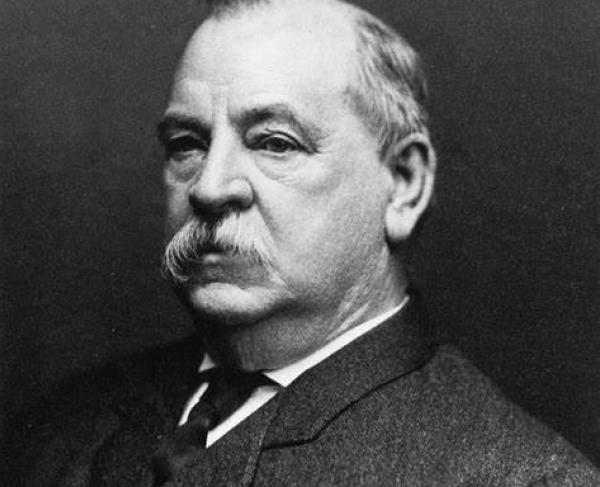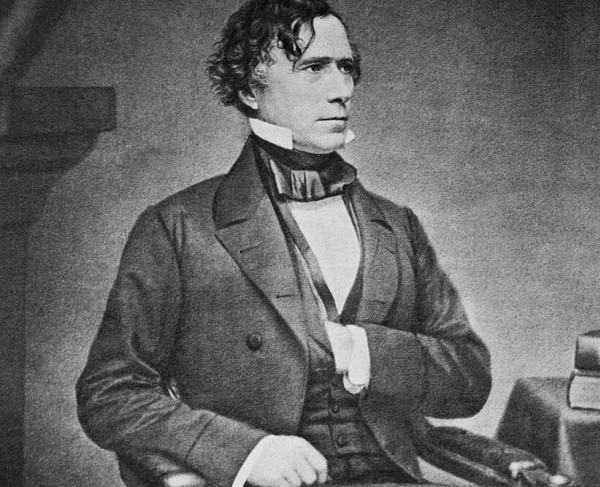Grover Cleveland

Stephen Grover Cleveland served as the only Democratic president during the Gilded Age, and he accomplished an unprecedented political move: serving two non-consecutive terms in the executive office. Not only did Cleveland earn himself the title of 22nd and 24th President of the United States, he also was known as “Old Veto,” vetoing more legislation that any other president that preceded him. From his beginnings in New York politics to his presidency, Cleveland was a notable reformer, but he was criticized for his inability to manage economic challenges and labor unrest.
Cleveland was born on March 18, 1837, to Richard Falley Cleveland and Ann Neal in Caldwell, New Jersey. He was the fifth of nine children. As a child, Cleveland grew up under the strong influence of Christianity since his father served as a Presbyterian minister. In 1841, the Cleveland family moved to upstate New York, where Cleveland’s father ministered in various congregations until his death about twelve years later. After the death of his father, Cleveland began to work to support his family, who struggled financially. He worked as a teacher in Gotham’s New York Institution for the Blind in New York City, and later, he took a job as a law clerk in Buffalo, New York. Without any formal law school education, Cleveland passed the New York bar exam in 1859, and he started to work as a full-time lawyer. About three years into his career, he started his own law firm, earning a name for himself in the state of New York.
Cleveland’s entrance into the workforce as a lawyer came during a tumultuous time in American history, occurring during the onset of the Civil War. Under the Conscription Act of 1863, all males between the ages of 20 and 45 were required to register for the draft. However, men could be exempted from the draft by paying $300 or enlisting a substitute. This controversial legislation resulted in draft riots in Cleveland’s home state of New York where young men protested exemptions that favored wealthier Americans. Cleveland paid George Beniski, a Polish immigrant, to serve as a substitute in his place in the 76th New York Infantry. Cleveland’s exemption from military service would plague him for the rest of his political career, and his political enemies labeled him as a “slacker.”
Cleveland’s passion for Democratic politics can be traced back to 1858 when he first worked for the local party organization, and from then on, he ascended to become one of the most influential members of the party. In 1862, Cleveland was elected city ward supervisor, and by 1863, he was appointed to serve as assistant district attorney of Erie County. In 1871, Cleveland assumed the position of sheriff of Erie County; after his two-year term, he returned to his law practice. Eight years later, Cleveland was elected mayor of Buffalo, New York, and in this position, Cleveland earned a reputation of being a staunch opponent of New York machine politics and Tammany Hall. This reputation earned him the Democratic gubernatorial nomination and the position of governor in New York in 1882. As governor, Cleveland gained national recognition by limiting corruption and patronage and implementing reforms alongside Republican Theodore Roosevelt. Cleveland’s bipartisan reforming efforts propelled him to earn the Democratic presidential nomination in 1884, without support from Tammany Hall.
The 1884 presidential campaign was a brutal one and riddled with scandals. Cleveland was accused of fathering an illegitimate child, and Cleveland’s Republican opponent, James G. Blaine, was charged with being implicated in the Credit Mobilier scandal. After a close election, Cleveland earned enough votes with the support of the Mugwumps, who were anti-Blaine Republicans, and became the 22nd President of the United States.
During Cleveland’s first term, he sought to limit the role of the federal government by reducing government spending and vetoing more legislation than any of his previous predecessors. He also sought to lower protective tariffs and implement non-interventionist foreign policy. Furthermore, Cleveland continued his efforts to limit political corruption by continuing Chester Arthur’s policy of ending the system of patronage by appointing government officials based on a commitment to civil service rather than party affiliation. He supported the Civil Service Commission, and he contributed to doubling the number of merit-based positions in the federal government.
Cleveland’s first term was also memorable for his wedding in the White House. In 1886, Cleveland married Frances Folsom, the 21-year-old daughter of one of Cleveland’s law partners. Grover and Frances Cleveland had five children, and Frances left a legacy as one of the most popular first ladies of the 19th Century.
Intense opposition to Cleveland’s tariff policy cost him the 1888 election to Republican Benjamin Harrison. Cleveland took the next four years to focus on practicing law and ran again against Harrison in 1892; he became the first president to serve two non-consecutive terms. As Cleveland took office, the Panic of 1893 hit, plunging the nation into a severe economic recession which lasted until 1897. In early 1893, a major railroad failed, and a large company declared failure leading to a widespread selling panic in the stock market. Following the selling panic, nearly 8,000 businesses failed across the country, 400 banks closed, the price of crops severely declined, and the unemployment rate soared. In the wake of the panic, Cleveland became increasingly unpopular. He controversially opposed the Silver Purchase Act and supported returning to the gold standard. Cleveland also wanted to continue forth with conservative economic policy, making it difficult for the country to bounce back from the recession. He also ran into issues with labor unrest when he sent federal troops to Chicago to forcefully shut down the Pullman Strike in 1894.
After a difficult second term, Cleveland decided to not seek a third term, and he spent the rest of his days in Princeton, New Jersey. He became a trustee at Princeton University, and he remained in that position for the rest of his life. On June 24, 1908, Cleveland died of a heart attack.
President Grover Cleveland was a president of many firsts: first to serve two non-consecutive terms, first Democratic president following the Civil War, and the first to hold a presidential wedding at the White House. During his two terms he sought to limit spending and the role of the federal government, which contributed to him becoming a figure of great controversy, but despite his unpopularity, Grover Cleveland contributed to sweeping reforms in civil service that still exist to this day.


